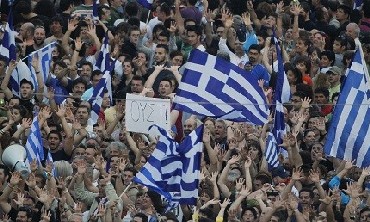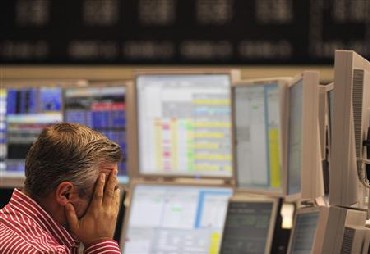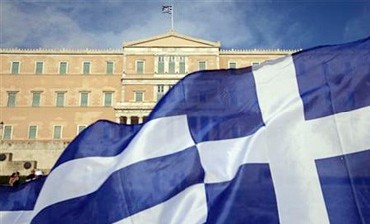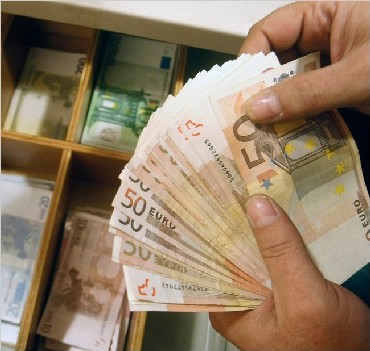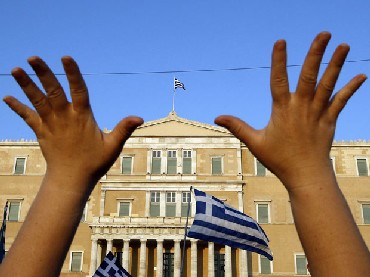 | « Back to article | Print this article |
Greece, Argentina: A tale of two defaults
Once upon a time, there was a country plagued by large deficits, high inflation, and decades of economic stagnation.
When economic problems once again became particularly acute, the country's leadership embraced a radical approach to achieving price stability.
A new currency was introduced and pegged to the US dollar at a one-to-one exchange rate. A new law stipulated that this quasi-monetary union was to last forever.
Moreover, the economy was opened, state enterprises were privatised, and the country participated in an important regional free-trade initiative.
Initially, the new arrangement worked very well. Growth returned, and confidence among foreign investors was such that large inflows of foreign direct investment, especially in the banking sector, arrived.
Click NEXT to read more...
Greece, Argentina: A tale of two defaults
But, after about 10 years, the success story turned bitter. The region's dominant trading partner devalued, and the US dollar appreciated considerably. The country thus had problems exporting. It developed external deficits and growth slowed.
Moreover, fiscal policy had not been kept under control, resulting in increasing public debt. International investors were initially quite willing to finance the government, but risk premia started to increase when the deficits became chronic.
The difficulties intensified when risk aversion in international financial markets increased markedly, owing to other emerging-market defaults. When the risk premia threatened to become unbearable, the international community responded with large financial support packages, financed principally by the International Monetary Fund and some friendly countries.
Click NEXT to read more...
Greece, Argentina: A tale of two defaults
The first rescue package envisaged a resumption of growth, a decline in the fiscal deficit, and structural reforms.
None of this was achieved, as the economy deteriorated under the impact of the fiscal measures, which were not offset by a surge in exports, because wages could not be lowered to gain competitiveness.
One year later, risk premia were even higher than before, and a second bailout package was put together, followed by a large "voluntary" debt rescheduling.
But none of this was enough to restore the confidence of international investors, who were not convinced that the government could service its debt in the face of mounting social resistance and an economy that continued to contract.
Click NEXT to read more...
Greece, Argentina: A tale of two defaults
Even worse, the country's savers lost trust in their own government, and started to withdraw their deposits. As the deposit flight accelerated, the economy went into a tailspin and social tensions exploded.
The government fell, and one of its fleeting successors announced a cessation of payments to foreign bondholders and an end to the currency peg.
The country was Argentina, which took about 10 years to move from its hard exchange-rate peg to the dollar, introduced in 1991, to its messy default at the turn of 2001-2002.
The Greek experience so far, at least looks like a replay of the Argentine drama. Greece also had a history of fiscal problems and inflation, which were supposed to be cured by admission to the European Union's Economic and Monetary Union (EMU) in 2001 (coincidentally, just as Argentina was preparing to default). Its first decade in EMU was also characterised by rapid economic growth, fuelled mainly by abundant and cheap capital inflows.
Click NEXT to read more...
Greece, Argentina: A tale of two defaults
But during this first decade, a key underlying problem emerged as Greece lost competitiveness relative to Germany, just as Argentina had lost competitiveness to Brazil.
While Argentina had been hit by the fallout from the emerging-market debt crisis of the late 1990s, Greece is now being hit by the increase in risk aversion since the financial crisis of 2008. As with Argentina a decade ago, Greece no longer looks solvent to international investors when they consider the country's slow growth and higher risk premia.
Their scepticism seems justified, since the usual indicators of debt sustainability look much worse for Greece than they did for Argentina. The Greek fiscal and external deficits are about three times larger, and the accumulated debt level is more than twice that of pre-default Argentina.
Click NEXT to read more...
Greece, Argentina: A tale of two defaults
The first large bailout package for Greece has also met a fate similar to Argentina's. One year on, risk premia are even higher, a second package is being put together, and private creditors are being asked to roll over their bond holdings "voluntarily".
Greece is also receiving much more foreign financial support than Argentina did. With the two rescue packages, Greece has been promised official credits worth euro 230 billion - more than 100 per cent of its gross domestic product (GDP).
On top of this, Greece has received euro 90 billion from the European Central Bank (ECB) at an interest rate of 1.25 per cent. This huge funding has so far saved the Greek banking system from collapse, and it constitutes the key advantage of joining a real monetary union as opposed Argentina's "quasi-monetary union" with the US dollar. But what happens if, like in Argentina, deposit flight continues and accelerates?
If Greek savers withdraw only one-half of their remaining deposits, the ECB will have to lend another euro 100 billion to Greek banks to keep them afloat. Indeed, Greece might ultimately require more than euro 400 billion in official support - almost 200 per cent of its GDP today.
Click NEXT to read more...
Greece, Argentina: A tale of two defaults
If Greece were to follow the Argentine script and be forced to leave the eurozone after a messy default, its nominal GDP is likely to be halved.
In that case, the Greek government's debt to its eurozone partners would be equivalent to 400 per cent of its GDP, very little of which would be repaid. Argentina defaulted on its private debt, but at least it repaid all its official debt.
Karl Marx famously wrote that history repeats itself as farce. In the case of Greece, history might turn out more like a much larger version of Argentina's tragedy.
The author is director of the Centre for European Policy Studies . Copyright: Project Syndicate, 2011
